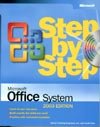
-
 Anglický jazyk
Anglický jazyk
Data Modeling for Quality
Autor: Graham Witt
This book is for all data modelers, data architects, and database designers¿be they novices who want to learn what's involved in data modeling, or experienced modelers who want to brush up their skills.
A novice will not only gain an overview...
Viac o knihe
Na objednávku, dodanie 2-4 týždne
47.61 €
bežná cena: 52.90 €
O knihe
This book is for all data modelers, data architects, and database designers¿be they novices who want to learn what's involved in data modeling, or experienced modelers who want to brush up their skills.
A novice will not only gain an overview of data modeling, they will also learn how to follow the data modeling process, including the activities required for each step. The experienced practitioner will discover (or rediscover) techniques to ensure that data models accurately reflect business requirements. This book describes rigorous yet easily implemented approaches to:modeling of business information requirements for review by business stakeholders before development of the logical data model
normalizing data, based on simple questions rather than the formal definitions which many modelers find intimidating
naming and defining concepts and attributes
modeling of time-variant data
documenting business rules governing both the real world and data
data modeling in an Agile project
managing data model change in any type of project
transforming a business information model to a logical data model against which developers can code
implementing the logical data model in a traditional relational DBMS, an SQL:2003-compliant DBMS, an object-relational DBMS, or in XML.
Part 1 describes business information models in-depth, including:the importance of modeling business information requirements before embarking on a logical data model
business concepts (entity classes)
attributes of business concepts
attribute classes as an alternative to DBMS data types
relationships between business concepts
time-variant data
generalization and specialization of business concepts
naming and defining the components of the business information model
business rules governing data, including a distinction between real-world rules and data rules.
Part 2 journeys from requirements to a working data resource, covering:sourcing data requirements
developing the business information model
communicating it to business stakeholders for review, both as diagrams and verbally
managing data model change
transforming the business information model into a logical data model of stored data for implementation in a relational or object-relational DBMS
attribute value representation and data constraints (important but often overlooked)
modeling data vault, dimensional and XML data.
- Vydavateľstvo: Technics Publications
- Rok vydania: 2021
- Formát: Paperback
- Rozmer: 235 x 191 mm
- Jazyk: Anglický jazyk
- ISBN: 9781634629133

 Nemecký jazyk
Nemecký jazyk 










